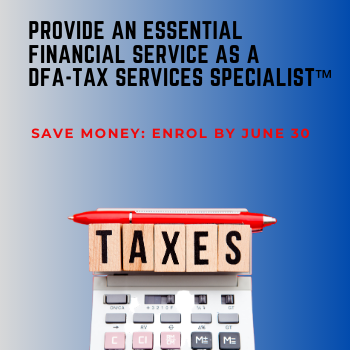Last updated: June 03 2020
The CRA “Gotcha” Crackdown: CERB and CEWS Fraudsters Beware

Beth Graddon
The CERB auditing has begun. Unfortunately, with a bit of “gotcha” scenario. The CRA is starting to crack down on those who are “misusing” the federal Canadian Emergency Response Benefits by introducing a tip line to report fraudsters. It’s too bad that the CRA has not given the repayment option portals the same fanfare. Tax and financial advisors can help, though.
Emergency Response Benefit “Snitch Line”
On Monday, June 1, CRA opened a tip line option to allow Canadians to report those who have accidentally or intentionally double-dipped into the CERB, Canada Emergency Student Benefit (CESB), and the Canada Emergency Wage Subsidy (CEWS) or misused these programs in any way. The tip line (1-866-809-6841) was opened under the National Leads Program, which typically focuses on tax cheating.
They’re now encouraging Canadians to phone in with any information about people who have received the CERB, CESB, or CEWS despite being ineligible for a number of reasons, including double-dipping, or receiving more money than $2,000 in each 4-week period. The CRA website has a comprehensive list as well as an online tool to help Canadians determine if their specific scenario means a repayment should be made.
Repaying the CERB
 What’s unfortunate is that this repayment option did not receive the same fanfare from the government as this “snitch line”. An option to return cheques by mail was added to the CRA website in early April, and a more traceable online option was then quietly introduced sometime last month, and the deadline has also been slipped in quietly.
What’s unfortunate is that this repayment option did not receive the same fanfare from the government as this “snitch line”. An option to return cheques by mail was added to the CRA website in early April, and a more traceable online option was then quietly introduced sometime last month, and the deadline has also been slipped in quietly.
CERB repayment deadline: The government is requesting that these payments be submitted by December 31, 2020. Otherwise, T4A slips will incorrectly include these payments as taxable income, creating an additional administrative and audit burden.
How to Repay the CERB
Specifically, if you become aware of an overpayment of your Canada Emergency Response Benefit (CERB), the repayment option is available in the CRA and EI portal. Look for “Repay my CERB”. Alternatively, it can be done through your online banking using the following instructions:
- Sign into your financial institution's online banking service
- Under "Add a payee" look for an option such as: CRA (revenue) – tax instalment
- Enter your 9-digit social insurance number (SIN) as the CRA account number
Or you can mail in a cheque following the process on the CRA website.
Who Needs to Repay the CERB?
This snitch line approach is unfortunate because of the complexity experienced both by Canadian taxpayers and the government with the quick implementation of the CERB. Many Canadians may not be clear on the CERB amounts they’re actually entitled to receive. Challenges in navigating this include the overpayments due to government processing errors that occurred when the CERB initially launched, as well as early confusion over the application process. Double-dipping may have occurred unintentionally as many Canadians turned to the CERB when the benefit became available first. The introduction of the CEWS and CESB occurred afterwards, and payments were issued for retroactive dates which may have led to overlap with CERB payments already received. In these instances, it’s the CERB that needs to be paid back by the recipient.
There has of course also been intentional misuse leading to repayment requirements.
Other CERB repayment scenarios according to the CRA:
- You earned employment or self-employment income earlier than expected
- You applied for the CERB but later realize you’re not eligible
- You receive a CERB payment from both Service Canada and the CRA for the same period
- You get rehired or find a new job and experience the following: you no longer meet the eligibility requirements for the 4-week period in question. For example, you applied for the 4-week period of April 12 to May 9. At the time you applied, you expected to have little or no work or income for that 4-week period. But you have just found out your employer has rehired you and will give you back-pay for that same 4-week period (including if the employer is using the CEWS to cover your wages). In this situation, you will need to repay the CERB for that 4-week period of April 12 to May 9.
It’s also important to know that the conditions around paying back the CERB are different if you’re paying back your first eligibility period, or a subsequent period.
For your first eligibility period: If your employment or self-employment income was $1,000 or less (before deductions) for at least 14 days in a row during this 4-week period, you do not need to repay the CERB.
For subsequent eligibility periods: You will need to repay the $2,000 for an eligibility period if you earned or will earn more than $1,000 (before deductions) from employment or self-employment income during that period.
Overall, Service Canada has reported that at least 200,000 individuals received twice the amount of CERB they were entitled to since the beginning of April, and there is no question, the amounts should be repaid regardless of why they were received.
Regardless of the “why”, anyone in receipt of extra payments within the same time period, or in receipt of CERB money they weren’t eligible for, must repay the excess. The CRA has not yet been clear about the consequences of those who don’t comply, but now is the time to make it right as CRA ramps up their audit efforts.
Need to Make an Adjustment to a CEWS Claim?
As of June 1, this is now an option.
According to the CRA website:
You may request adjustments to applications you have already submitted. To change a previous wage subsidy claim, visit:
If you applied using the Web Forms application and need to change your claim, you may call CRA’s business enquiries phone number.
You will need to make sure you continue to meet eligibility requirements for any updated claims, and keep records supporting your wage subsidy claim adjustment.
When completing the adjustment, you will need:
- your payroll program account number (123456789RP0001, for example)
- to know which claim period you are adjusting
- all of the information necessary to change the amount on each line(s) you would like to adjust
Representatives who are changing a claim on behalf of an employer must be authorized at level 2 or 3. You will need to have an updated Attestation for owner/managers and/or senior employees to support the amended application.
The message is clear: the government will aggressively come after overpayments or misuse of the CERB, CEWS, and other emergency benefit payments and that’s why Knowledge Bureau has scheduled a special Virtual CE Summit for September 30 to discuss Tax Audit Defence and Bankruptcy planning to help advisors better help their clients deal with the Financial Fallout of the pandemic. RSVP now by calling 1-866-953-4769 or by emailing registrar@knowledgebureau.com, and we’ll follow-up with you for payment later.
Additional educational resources: Become the invaluable resource Canadians need to navigate the tax pitfalls relating to the COVID-19 Emergency Response Benefits and much more. Until June 30, get access to the September 30 Virtual CE Summit for free when you enrol in a Knowledge Bureau Designation Program. Consider the DFA-Tax Services Specialist™ program, or become a Real Wealth Manager™.
COPYRIGHT OWNED BY KNOWLEDGE BUREAU INC., 2020.
UNAUTHORIZED REPRODUCTION, IN WHOLE OR IN PART, IS PROHIBITED.

